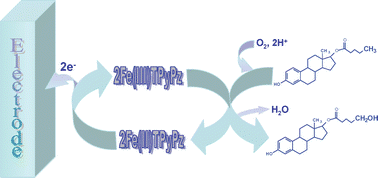Electrochemical sensor highly selective for estradiol valerate determination based on a modified carbon paste with iron tetrapyridinoporphyrazine
Abstract
This work reports the use of

* Corresponding authors
a Universidade São Francisco, Bragança Paulista, SP, Brazil
b Centro de Ciências Exatas e Tecnologia, Universidade Federal do Maranhão, São Luiz, MA, Brazil
c
Departamento de Química Analítica, Instituto de Química, Universidade Estadual Paulista “Julio de Mesquita Filho”, Araraquara, SP, Brazil
E-mail:
mpilar@iq.unesp.br
Tel: +55 16-33016620
This work reports the use of

 Please wait while we load your content...
Something went wrong. Try again?
Please wait while we load your content...
Something went wrong. Try again?
I. V. Batista, M. R. V. Lanza, I. L. T. Dias, S. M. C. N. Tanaka, A. A. Tanaka and M. D. P. T. Sotomayor, Analyst, 2008, 133, 1692 DOI: 10.1039/B804462G
To request permission to reproduce material from this article, please go to the Copyright Clearance Center request page.
If you are an author contributing to an RSC publication, you do not need to request permission provided correct acknowledgement is given.
If you are the author of this article, you do not need to request permission to reproduce figures and diagrams provided correct acknowledgement is given. If you want to reproduce the whole article in a third-party publication (excluding your thesis/dissertation for which permission is not required) please go to the Copyright Clearance Center request page.
Read more about how to correctly acknowledge RSC content.
 Fetching data from CrossRef.
Fetching data from CrossRef.
This may take some time to load.
Loading related content
